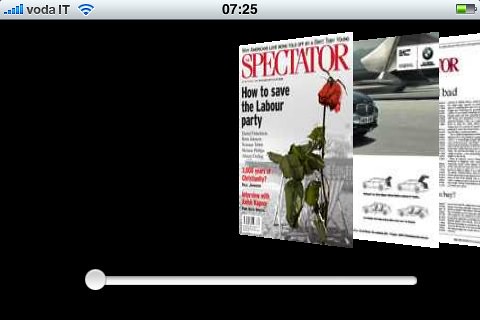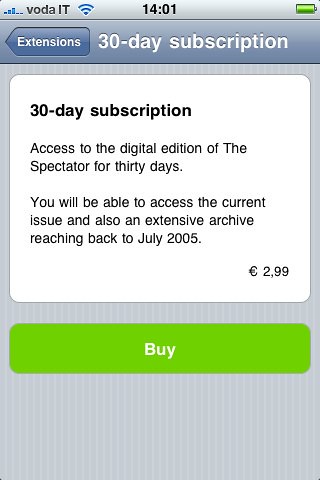Google yesterday launched Fast Flip at Google Labs. From the announcement:
Fast Flip is a new reading experience that combines the best elements of print and online articles. Like a print magazine, Fast Flip lets you browse sequentially through bundles of recent news, headlines and popular topics, as well as feeds from individual top publishers. As the name suggests, flipping through content is very fast, so you can quickly look through a lot of pages until you find something interesting. See Googleblog.
This is a highly revealing way of characterising our on-line reading experience. It is as though Google thinks there are only two ways of reading. Search, of course. First, and foremost,
search in which you know more or less what you want and use a search engine to find it. And then 'flipping through content very fast until you find something interesting.' Publishers and educators know that this is not the way that most serious and most recreational readers read. Although much reading is exploratory, the reputation of a title, an author or a publisher is and will remain important to readers of newspapers, magazines and books. Metadata matters. Titles, editions, dates, authors, correspondents, replies, corrections, editorials ....
Google makes this 'fast flipping' possible by hosting images from the newspaper and magazine web sites. Incidentally, they only use the newspaper websites. I did not see any pages which actually used the Print Image. They are building on the look and feel of the publishers web sites, not their magazines and newspapers as printed. The service is clearly aimed at attracting publishers through a revenue split, but the activity is hosted and managed by Google and one wonders whether the collateral advertising which appears in the margin of the page images can generate significant revenues. Paul Bradshaw thinks not:
Of course, by hosting screenshots Google are eating into one of the key metrics that publishers use to sell advertising: the time a user spends on your site. And given that many readers don’t read beyond the first few pars, there’s a good chance it will eat into the numbers clicking through to the actual page at all. So unless Google’s ad rates are significantly higher, what reason at all would a commercial publisher have to sign up to a scheme that devalues their own ad inventory in exchange for some pennies from Google? Blind panic in the midst of a crisis, that’s all. Google's Fast Flip -- A Cruel Joke on the News Industry
The commercial proposition is highly dubious. But Google is being completely sincere and genuine in offering its helping hand . Google is convinced that this Fast Flipping is the way that consumers want to read news on the internet.
"We have tried to build platforms and tools that build a healthy, rich eco-system online that is supportive of content. This is a new way of looking at content." Marissa Mayer quoted by BBC News.
Having seen the success of Google News, and keeping in mind the atomisation of music, and the considerable success of the iPod Shuffle, Google appears to consider that a rapid flipping (navigation) between atomised stories is the way to read news. The point has been clearly stated by their spokespersons.
...... the structure of the Web has caused the atomic unit of consumption for news to migrate from the full newspaper to the individual article. As with music and video, many people still consume physical newspapers in their original full-length format. But with online news, a reader is much more likely to arrive at a single article. While these individual articles could be accessed from a newspaper's homepage, readers often click directly to a particular article via a search engine or another Website.... Marissa Mayer Testimony to the US Senate on the Future of Journalism (PDF)
The Internet has changed the unit of consumption. The unit of consumption for news is now the article, not the newspaper. I still love reading the newspaper. But I use the Internet to look at a lot of news stories, too, and on the Internet there's a different way of consuming things. No one is saying that newspapers shouldn't make money...
William Patry, Google copyright expert, Interview with Publishers Weekly
Google News and Google Fast Flip embody the view that the context of publication in which a story is published is unimportant. News therefore works best on the web if it is atomised and decontextualised. Newspapers and magazines have to an extent prepared the ground for this. Their own web sites make it increasingly difficult to locate the story in the context in which it was published. Magazines are careless about the value to subscribers of the contents of their current and forthcoming issues. Newspapers and Magazines need to recover the confidence that reading the magazine or the newspaper is an experience that can be enjoyed on the web as much as it can be in print. The newspaper and the magazine as a digital experience have to offer sufficient value that a readers is prepared to become a subscriber to the magazine or newspaper. Subscription services -- especially of the digital edition and its archive will generate much more for most publishers, than a Fast Flip of streamed content which will catch a trickle of Ad-sense revenues. Of course, there are changes and more will be needed. Search within a publication is very important. Internal navigation is very important. The possibility of citation and book-marking is essential. External navigation is especially important when it is relevant to the reading experience. But, Fast Flipping? That may be about as much use as Shuffling the news.









